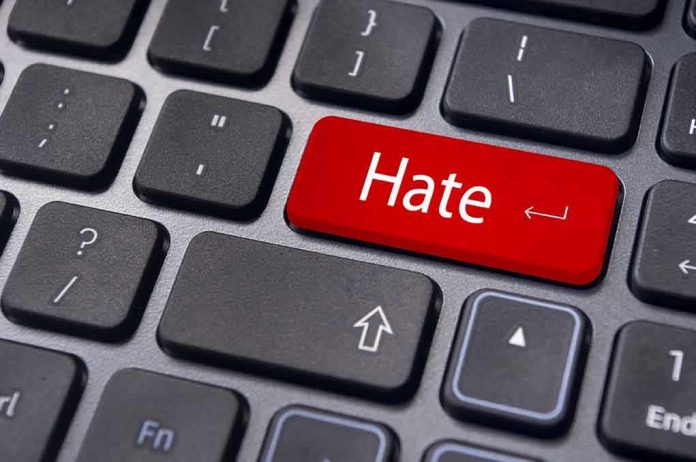
What happens when a tragic tale of racial vengeance unravels into a shocking saga of deceit, fraud, and betrayal?
At a Glance
- Mario Raynard Roberson claimed racial targeting after his home was vandalized.
- A fatal fire at Roberson’s home initially framed as a hate crime turned out to be insurance fraud.
- An accomplice exposed the scam, leading to Roberson’s federal indictment.
- The case raises concerns about the misuse of racial narratives for personal gain.
A Tale of Two Narratives
Mario Raynard Roberson was once at the heart of a dramatic story that gripped Huntsville, Texas. In May 2023, he claimed that his home was the target of racially motivated vandalism—graffiti splattered across his walls, a bullet hole through his window. This narrative took a dark turn when a fire claimed two lives in June of the same year, and Roberson attributed it to the same racial animus. He called for federal intervention, painting a picture of a man haunted by hate.
The plot thickened when an accomplice, who survived the inferno, alleged that the real motive behind the fire was not racism but cold, calculated insurance fraud. This revelation flipped the script entirely, from a community rallying against perceived racial hatred to a criminal investigation into insurance deception. The neighborhood of Waterwood and beyond watched as the hate crime narrative crumbled under the weight of new evidence.
The Investigation Unfolds
The initial investigation by law enforcement and advocacy groups like CAIR focused on the racial implications of the crime. They supported Roberson’s claims, urging the FBI to look into the matter as a hate crime. However, as evidence mounted, authorities shifted their gaze toward a more sinister motive—financial gain. It turned out Roberson allegedly orchestrated the entire ordeal to cash in on an insurance payout, using racial tensions as a smokescreen.
The surviving accomplice’s testimony became the linchpin in unraveling the fraud. He reportedly confessed that the fire was part of an elaborate scheme hatched by Roberson, intended to deceive insurers and make off with a hefty sum. This confession not only changed the course of the investigation but also placed Roberson in the crosshairs of a federal indictment.
Legal and Social Ramifications
In July 2025, Roberson faced a barrage of charges, including conspiracy to commit arson resulting in death and wire fraud. The stakes were high, with potential life imprisonment looming over his head. The case has since evolved into a cautionary tale about the misuse of racial narratives for personal gain. It also highlights the complexities of navigating genuine hate crime claims amid instances of fraudulent exploitation.
The fallout from this case extends beyond the courtroom. Advocacy groups like CAIR, initially vocal in their support for Roberson, now face scrutiny over their role in amplifying unverified claims. The broader public is left grappling with the impact of such high-profile hoaxes on legitimate racial justice efforts, raising questions about trust and verification in the age of media sensationalism.
Broader Implications and Lessons Learned
The Roberson case serves as a stark reminder of the need for thorough investigations before publicizing allegations of hate crimes. It underscores the delicate balance between advocating for victims and ensuring that claims are substantiated by solid evidence. The insurance industry, too, has been put on alert, likely to tighten protocols in response to such fraudulent schemes.
The social and political ramifications of this case could resonate for years, affecting discourse on both hate crimes and insurance fraud. It presents a challenge to advocacy groups and law enforcement to develop more robust mechanisms for distinguishing between genuine and fraudulent claims, ensuring that the voices of real victims are not drowned out by those seeking to exploit societal tensions for personal benefit.







